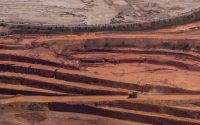Maps: Tracking Air Quality and Smoke From Canada and U.S. Wildfires
Smoke and haze lingers over sections of North America, as polluted air continues to spread from hundreds of wildfires burning throughout Canada.
This is the current status of air quality across the United States and Canada. (Here’s a guide to understanding air quality readings.)
In early June, the level of particulate matter in the air from smoke became so unhealthy that many U.S. cities set records. Some Canadian cities experienced far worse conditions. At points, it was hazardous to breathe everywhere from Minnesota and Indiana to sections of the Mid-Atlantic region and the South, according to AirNow, a U.S government data source.
Visibility decreased to startling degrees in many cities, including New York, Toronto, Cincinnati and elsewhere. In some places, smoke from the fires blanketed the sky in an orange haze.
Here’s how the smoke traveled in early June:
Source: National Oceanic and Atmospheric Administration
Note: Data is as of 12 p.m. Eastern time on June 10 and is based on hourly modeled forecasts of smoke dispersion derived from fire and weather conditions.
Much of the smoke that plagued the region could be traced back to a large number of fires burning in Quebec. A storm system swirling off the coast of Nova Scotia forced the smoke from these fires south into the United States, and then east — toward some of the most densely populated areas in the country.
Many of the Quebec fires were ignited by lightning, but above-normal temperatures and dry conditions have fueled outbreaks across Canada since May.
Fire season in Canada usually starts in May, but the start of this year’s activity has been particularly alarming for officials. Hundreds of fires are currently burning throughout Canada, according to the Canadian Interagency Forest Fire Centre.
So far there have been few major U.S. fire outbreaks. But above-average wildfire potential is forecast this summer for the Pacific Northwest, and for most of Canada too.


